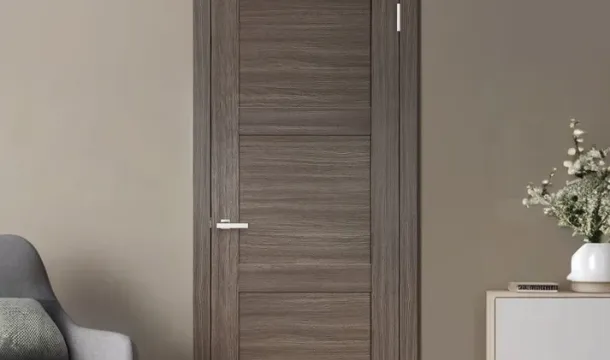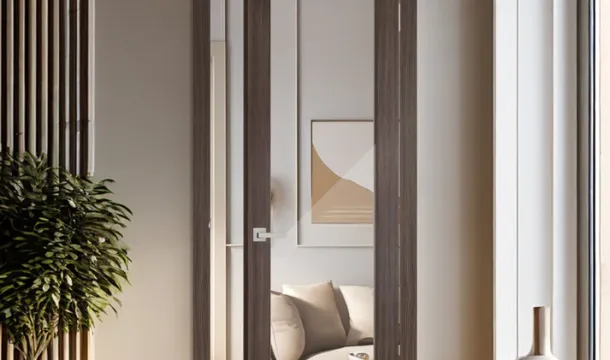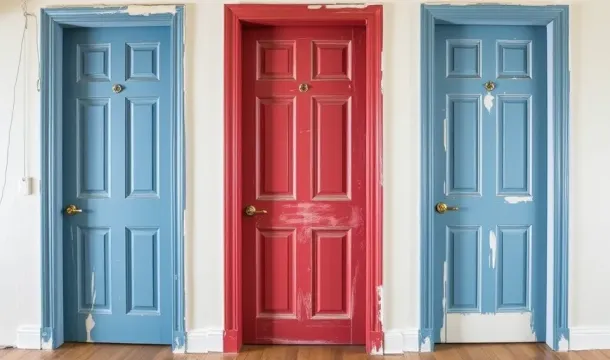Choosing Door Handles to Complement Your Interior Style
Popular Articles
- Choosing the Perfect Interior Doors for Your Canadian Home
- A Complete Guide to Choosing Interior Doors for Canadian Homes
- The Challenges of Painting Interior Doors
- Understanding Interior Doors and Their Role in Your Home
- The Perfect Blend of Reliability and Design: Interior Doors with Italian "Sandwich" Technology
Select door handles based on the dominant materials and color palette of your space. For example, matte black handles pair seamlessly with modern minimalist interiors featuring monochrome schemes, while polished brass suits classic or vintage decors with warm tones. Matching handle finishes to other hardware elements such as light fixtures or cabinet knobs creates a cohesive look that ties rooms together.
Consider the door type and function when selecting handle styles. Lever handles offer ease of use for high-traffic areas like kitchens and bathrooms, whereas round knobs can enhance traditional designs in bedrooms or closets. In homes with children or elderly residents, ergonomic shapes with smooth edges improve safety without sacrificing style.
Scale and proportion affect visual balance between handles and doors. Oversized doors call for larger, statement-making handles made from sturdy materials like solid brass or stainless steel. Conversely, slim interior doors benefit from delicate, streamlined hardware that doesn't overwhelm the design. Proper alignment with door panels and trim ensures functional harmony and aesthetic appeal simultaneously.
Selecting Handle Materials for Rooms
For high-moisture areas like bathrooms and kitchens, stainless steel offers superior corrosion resistance and durability. Its smooth surface is easy to clean and withstands frequent contact with water and cleaning agents without tarnishing or rusting.
Bedrooms benefit from warmer materials such as brass or bronze, which add a touch of elegance and age gracefully with natural patina. These metals also provide antimicrobial properties, contributing to a healthier environment in personal spaces.
Living rooms and common areas can incorporate handle materials that match the room's traffic level. Solid zinc alloy handles combine strength with affordability and come in various finishes that resist wear. Alternatively, matte black or brushed nickel finishes suit modern interiors while minimizing visible fingerprints.
For utility rooms or closets, durable plastics with textured surfaces offer budget-friendly options resistant to scratches and easy to maintain. However, avoid plastic handles in main living areas where tactile quality impacts perceived interior value.
Wooden handles introduce warmth and texture ideal for rustic or Scandinavian-style rooms but require protective coatings to prevent damage from moisture or oils. Pairing wooden handles with metal backplates increases longevity without compromising aesthetics.
Matching Finishes with Decor Colors
Select door handle finishes that either harmonize or create intentional contrast with your room's dominant color palette to enhance cohesion and depth. For interiors featuring cool tonessuch as grays, blues, and greensmatte nickel, satin chrome, or brushed steel finishes integrate seamlessly by reinforcing the subdued ambiance without overpowering it.
Warm-toned rooms with beige, cream, terracotta, or rich browns benefit from handles in antique brass, oil-rubbed bronze, or warm gold. These finishes complement earthy hues by adding warmth and subtle luxury. In spaces where bold jewel tones like emerald green or sapphire blue prevail, polished brass or blackened brass handles provide a sophisticated accent that elevates the overall look.
Neutral Backgrounds and Versatile Finishes
White walls and neutral furnishings offer flexibility in choosing handle finishes. Matte black handles deliver modern sharpness against white surfaces while satin brass can introduce a soft glow without clashing. For minimalist interiors relying on monochrome schemes, stainless steel or chrome hardware maintains clean lines and does not disrupt visual flow.
Creating Deliberate Contrast
- Dark walls: Light metallics such as brushed nickel or polished chrome stand out effectively without seeming garish.
- Light-colored rooms: Dark matte finishes like black iron or oil-rubbed bronze add definition and anchor the design.
- Mixed palettes: Choose transitional finisheslike satin brassthat bridge between warm and cool elements for balanced integration.
Avoid matching door handle finish too literally to wall paint; instead, consider undertones and surrounding materials like flooring and furniture to maintain harmony. Testing samples in natural light before finalizing selections ensures the finish complements rather than clashes with your decor colors.
Choosing Handle Shapes for Functionality
Select door handle shapes based on the frequency of use and user accessibility. Lever handles offer superior ergonomics, making them ideal for high-traffic areas and households with children or elderly members, as they require less grip strength compared to knobs.
Round knobs suit rooms where security and deliberate operation are priorities, such as bedrooms or closets, since they demand a firm grasp and twisting motion. However, avoid using knobs in spaces where ease of exit is critical, like kitchens or bathrooms, to prevent accidental lock-ins.
Pull handles work best for sliding or pocket doors because their shape facilitates smooth gliding without applying rotational force. For heavy or oversized doors, elongated bar handles provide better leverage, reducing strain during opening.
Consider also the clearance needed around the handle shape. Bulky or angular designs may obstruct furniture placement near doors or catch on clothing in narrow hallways. Slimline profiles suit compact spaces by minimizing protrusion while maintaining usability.
In homes with mobility aids like walkers or wheelchairs, lever-style handles positioned between 34 and 48 inches from the floor ensure compliance with accessibility standards and promote independent access.
Popular Articles
- Choosing the Perfect Interior Doors for Your Canadian Home
- A Complete Guide to Choosing Interior Doors for Canadian Homes
- The Challenges of Painting Interior Doors
- Understanding Interior Doors and Their Role in Your Home
- The Perfect Blend of Reliability and Design: Interior Doors with Italian "Sandwich" Technology

Choosing the Perfect Interior Doors for Your Canadian Home

A Complete Guide to Choosing Interior Doors for Canadian Homes
